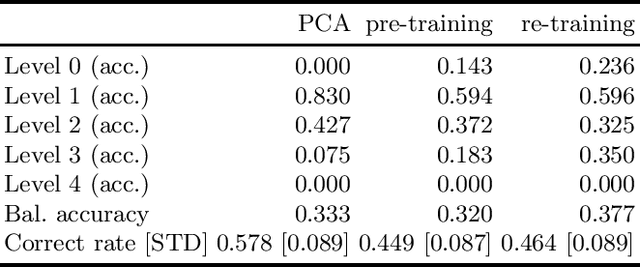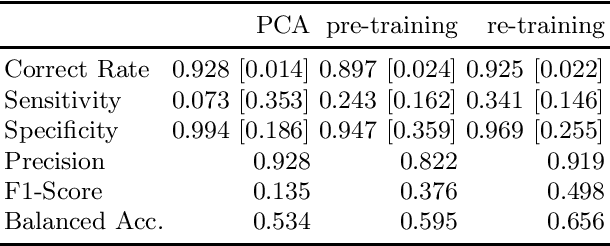A Neural Approach to Ordinal Regression for the Preventive Assessment of Developmental Dyslexia
Paper and Code
Feb 06, 2020



Developmental Dyslexia (DD) is a learning disability related to the acquisition of reading skills that affects about 5% of the population. DD can have an enormous impact on the intellectual and personal development of affected children, so early detection is key to implementing preventive strategies for teaching language. Research has shown that there may be biological underpinnings to DD that affect phoneme processing, and hence these symptoms may be identifiable before reading ability is acquired, allowing for early intervention. In this paper we propose a new methodology to assess the risk of DD before students learn to read. For this purpose, we propose a mixed neural model that calculates risk levels of dyslexia from tests that can be completed at the age of 5 years. Our method first trains an auto-encoder, and then combines the trained encoder with an optimized ordinal regression neural network devised to ensure consistency of predictions. Our experiments show that the system is able to detect unaffected subjects two years before it can assess the risk of DD based mainly on phonological processing, giving a specificity of 0.969 and a correct rate of more than 0.92. In addition, the trained encoder can be used to transform test results into an interpretable subject spatial distribution that facilitates risk assessment and validates methodology.
 Add to Chrome
Add to Chrome Add to Firefox
Add to Firefox Add to Edge
Add to Edge